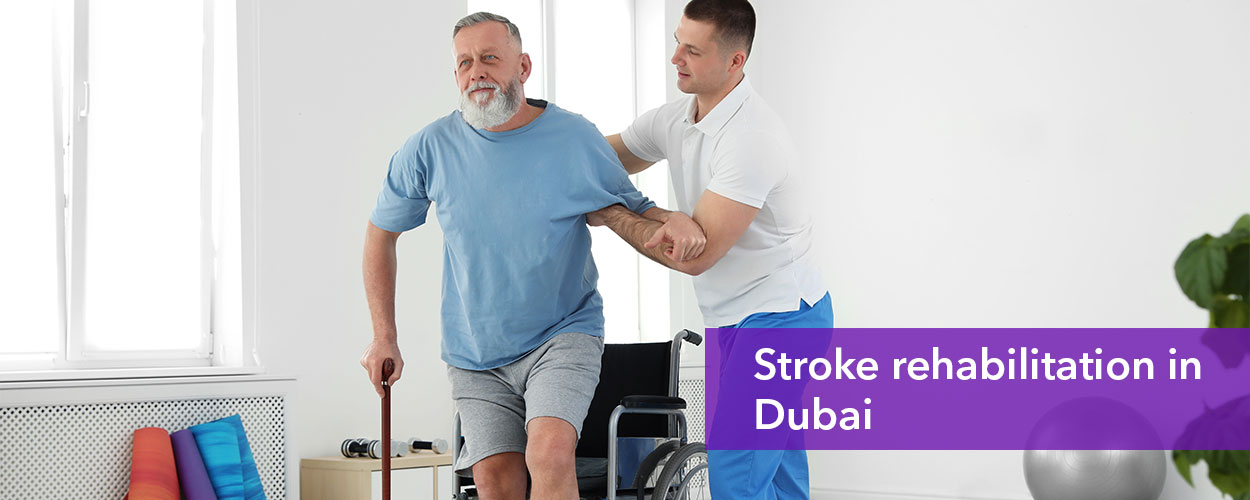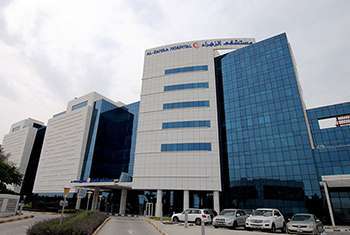Types of Stroke Rehabilitation in Dubai
Some of the best hospitals in Dubai have an in-house team of rehabilitation specialists that help the patient to regain their physical as well as cognitive functions. The patient usually stays under the care of a post-stroke rehab team that can build momentum towards recovery through:
1. Speech and language therapy
- A stroke usually affects one part of the brain. If it affects the left part, the patient may suffer from a condition known as Aphasia.
- The left part of the brain controls the patient’s ability to communicate. This causes the patient to face issues with reading, writing, speaking, and even swallowing.
How does the therapy help?
- The speech-language therapy helps the patient to relearn or find an alternate method of communication.
- The therapy usually involves practicing a set of techniques regularly with a speech and language therapist.
Techniques involved
- Body positioning
- tongue strengthening exercises
- Dietary modifications
- Breathing and cadence exercises
2. Physical Therapy
Stroke can also leave a patient with temporary or permanent paralysis on either side of the body. This reduces the patient’s ability to move and perform even their basic day-to-day functions.
How does the therapy help?
Physical therapy is designed to regain the lost functions of the limbs through a variety of motor-learning techniques, ambulation, e-simulation, and other therapies.
Techniques involved
- Mobility training
- Constraint-induced therapy
- Range-of-motion therapy
- Functional electrical stimulation
- Robotic technology
- Wireless technology
- Virtual reality
3. Occupational Therapy
- With the loss of both motor and cognitive functions, the patient loses the ability to perform normal tasks and activities. These often include cooking, driving, doing household chores, and grooming.
How does the therapy help?
- Occupational therapy is designed to help the patient regain the sense and confidence to perform their own functions.
- This is usually done by repetitive exercises and steps that are to be followed in order to perform a particular task.
- Such exercises help patients to overpower visual impairments, perception difficulties, and one-sided paralysis.
Techniques involved
- Repetitive activities
- Perceptual training
4. Neurological Therapy
- The most common effect of a stroke is impaired cognitive function due to brain and nerve damage. This can cause irreversible damage to the patient’s social and basic skills.
- Not just this, brain damage can also affect the other functions of the body as a movement.
How does the therapy help?
- Neurological therapy is designed to enhance neuroplasticity in the brain cells.
- Neuroplasticity is a property of the brain that helps it to change and adapt to new patterns and surroundings at any age.
Techniques involved
- Magnetic brain stimulation
- Non-invasive stroke therapy
- Brain exercises for stroke recovery
5. Mirror Therapy
- Mirro therapy is also designed to target one-sided paralysis.
- The doctor or therapist moves the unaffected limb and the patient is instructed to watch it in the mirror placed facing the affected limb.
- The patient’s brain rewires and starts to believe that as if the affected limb has started working.
- As time progresses, the affected limb may start showing slight movement.
6. Recreational Therapy
- Recreational therapy helps patients to get back to activities they enjoy. These activities help the patients to attain a gratifying feeling that helps them on the road to recovery.
- Recreational therapy follows similar exercises and patterns as occupational therapy and is also performed by an occupational therapist.





